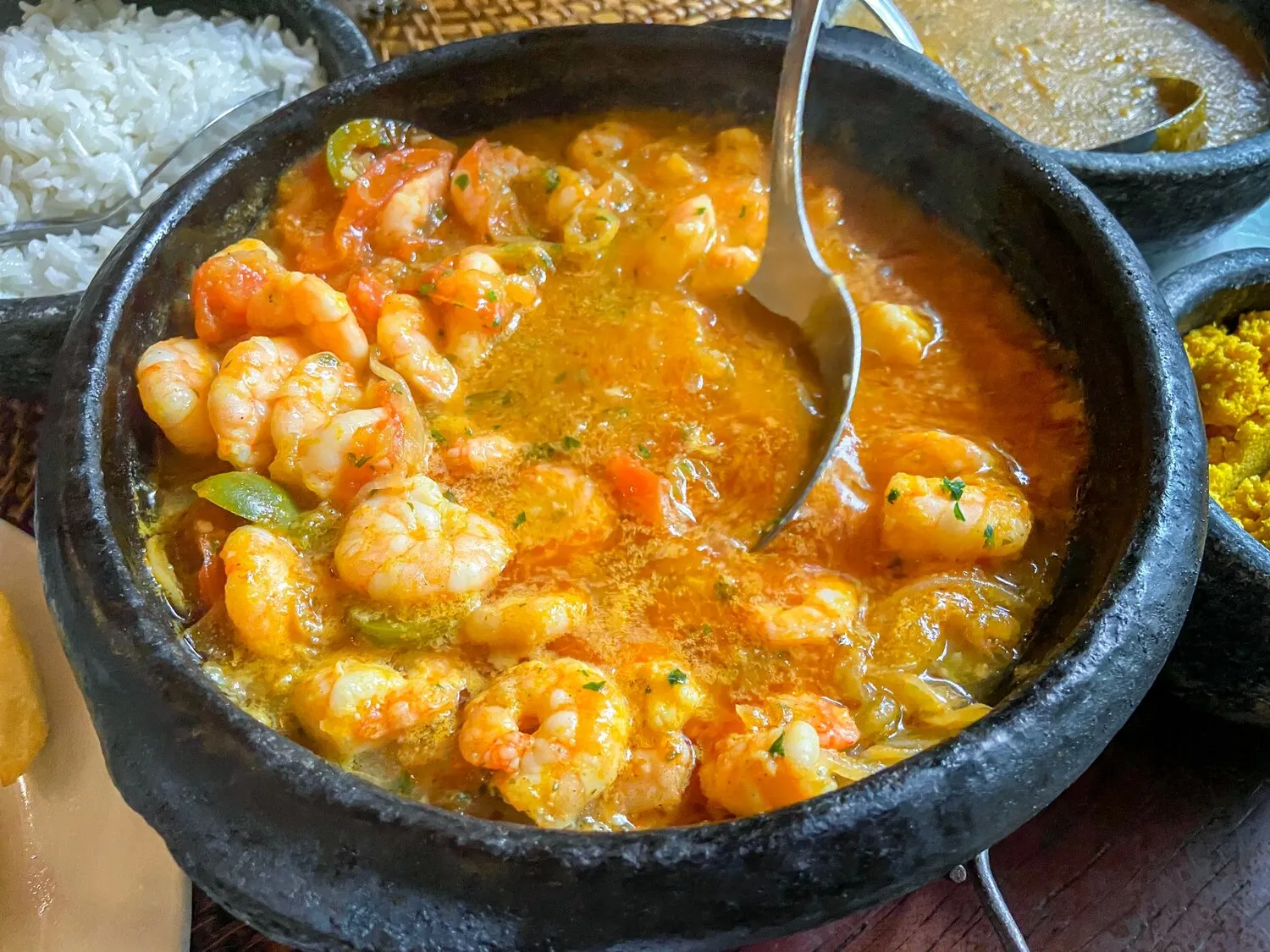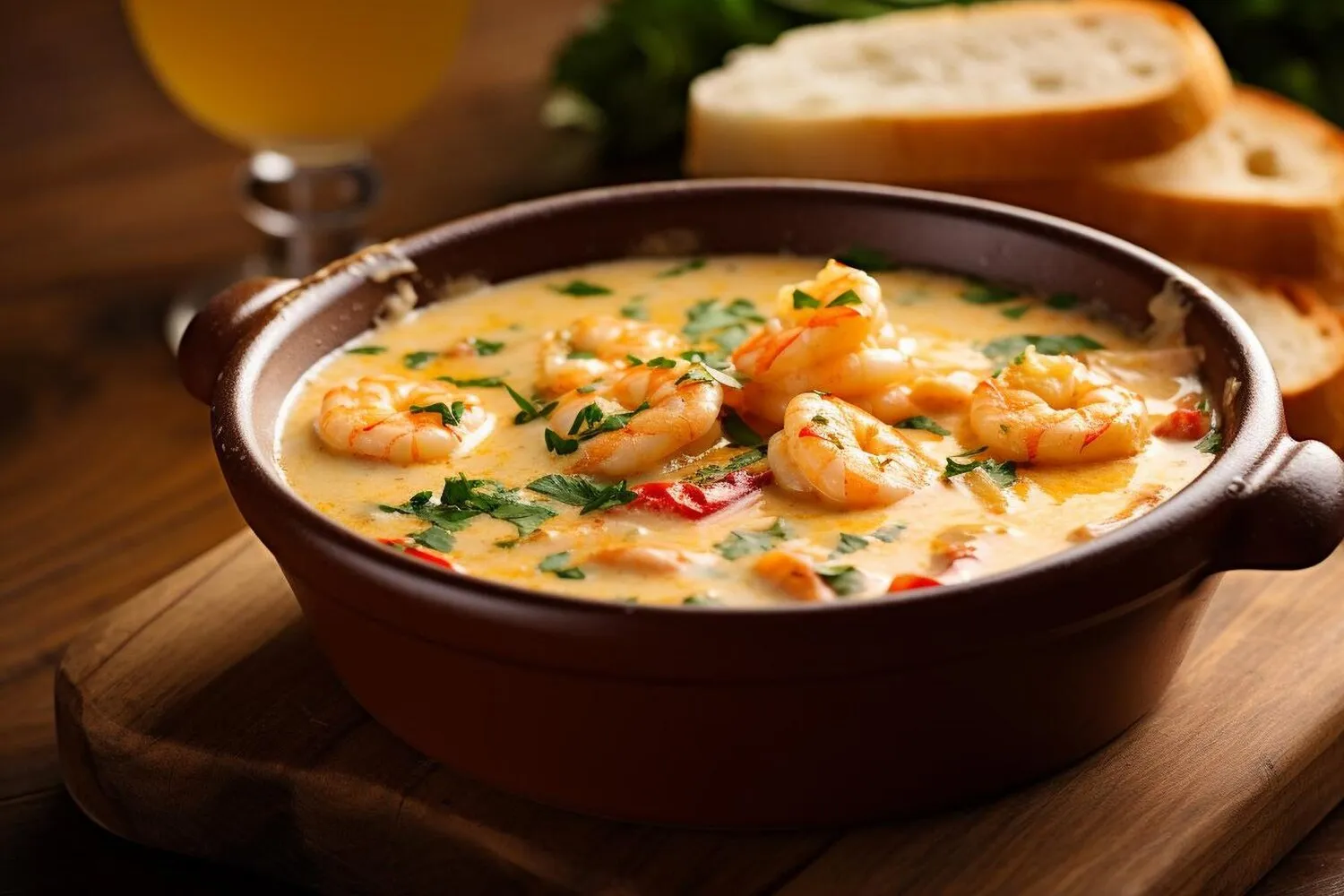
Moqueca de Camarão
Shrimp stew cooked in coconut milk, tomatoes, onions, and peppers, a traditional Bahian dish.
Nutrition Facts
* The % Daily Value (DV) tells you how much a nutrient in a serving of food contributes to a daily diet. 2,000 calories a day is used for general nutrition advice.
Cia do Rango
Moqueca reflects Brazil's diverse culinary heritage, blending indigenous cooking techniques, African ingredients, and Portuguese influences. Indigenous Brazilians originally cooked fish in leaves over a fire. African enslaved people introduced ingredients like coconut milk and palm oil (dendê). The Portuguese added tomatoes, onions, and bell peppers, shaping the moqueca we know today.
Moqueca is deeply ingrained in Bahian culture, representing family gatherings, festive celebrations, and the region's strong connection to the sea. It's more than just a meal; it's a symbol of Bahia's cultural identity and culinary heritage.
Family and Community
Moqueca is often prepared and enjoyed in large gatherings, strengthening family bonds and fostering a sense of community. It's a dish meant to be shared.
Regional Identity
Moqueca is considered a signature dish of Bahia, reflecting the region's unique blend of African, indigenous, and Portuguese influences. It is served proudly in restaurants and homes throughout Bahia.
Celebrations
Moqueca is often served during special occasions and celebrations, adding to the festive atmosphere. Its rich flavors and communal nature make it a perfect dish for sharing joy.
Moqueca de Camarão is a flavorful shrimp stew characterized by a rich, savory, and slightly sweet profile. It features a delicate balance of seafood sweetness, aromatic vegetables, and creamy coconut milk.
The dominant flavor is the sweet, briny taste of fresh shrimp, complemented by the sweetness of ripe tomatoes and onions. Bell peppers contribute a subtle herbaceous note. Coconut milk provides a creamy texture and sweet, nutty flavor, balancing the acidity of the tomatoes. Dendê oil (optional but traditional) adds a unique earthy, slightly pungent flavor and vibrant orange color. Cilantro or parsley provides a fresh, herbaceous finish. The overall profile is savory, aromatic, and deeply satisfying.
Freshness is Key
Use the freshest shrimp and vegetables possible for the best flavor. Look for shrimp with a firm texture and bright color.
Layer the Flavors
Build the flavors gradually by sautéing the onions, peppers, and garlic before adding the tomatoes and other ingredients. This allows the flavors to meld and deepen.
Don't Overcook the Shrimp
Shrimp cooks quickly. Add it towards the end of the cooking process and cook until just pink and opaque to avoid a rubbery texture.
Embrace Dendê Oil (Optional)
If using dendê oil, use it sparingly as its flavor is potent. It adds an authentic Bahian touch.
Serve with Pirão and Rice
Moqueca is traditionally served with pirão (a creamy cassava flour porridge) and white rice to soak up the delicious sauce.
Explore additional Bahian Cuisine dishes and restaurants
Explore Bahian CuisineDiscover top dining spots and culinary experiences in Feira de Santana.
Explore Feira de SantanaLearn more about the food culture, restaurant scene, and culinary heritage of Brazil.
Explore Brazil
